German excess mortality (Part 3)
Administered vaccine doses per non-COVID excess death
Summary
Non-COVID excess deaths correlate very strongly with newly administered vaccine doses in all German federal states during the time between calendar week 8/2021 and calendar week 27/2021 (Pearson correlation coefficient on the national level: 0.980).
95.8% of the variance in weekly, nationwide non-COVID excess deaths is explained by the number of administered vaccine doses in Germany per week (Standard Error: 78.7 deaths per week).
The correlation is strong enough to suggest a causal link. The insights we have gained into the pharmacodynamics of the nucleotide-based COVID-19 vaccines throughout the past years support the notion of a causal link between non-COVID excess deaths and administered vaccine doses.
One excess death occurred for every 1642 administered vaccine doses (95% CI: 1477-1808 doses).
From the time of their introduction to the market until the end of 2022 a total of 191,029,491 COVID-19 vaccine doses were administered in Germany according to RKI figures. This translates to 116,309 vaccinees who died as a direct consequence of receiving a dose of the nucleotide-based vaccines against COVID-19 in Germany (95% CI: 105,669 - 129,331).
Introduction
This is the third part in a series of articles dedicated to the soaring German mortality figures.
Summary of "German excess mortality (Part 1)"
The first article contains a large number of charts displaying mortality, trend-corrected mortality, average (seasonal) mortality and excess mortality figures of all federal lands for 2010-2022. These charts are well worth looking into if you want to gain an impression of the situation in Germany.
I concluded that German excess mortality in 2022 was not only exceptionally high, but has also been increasing steadily throughout the entire year which is highly unusual.
Summary of "German excess mortality (Part 2)"
In the second article I looked at how much acute health hazards resulting from exposure to COVID-19 vaccines and their translated payload - the spike protein - might be contributing to the increase in mortality.
I plotted the Pearson correlation coefficient between excess mortality and vaccination rates across German federal lands over the course of 2021-2022 and drew two conclusions:
Vaccines net impact reduced mortality in 2021
Vaccines net impact increased mortality in 2022
These are non-COVID excess deaths plotted along weekly vaccinations. Today I will take a closer look at how strongly these two correlate.
Introduction to "German excess mortality (Part 3)"
I had written a long article about how the BQ.1 lineage is causing mortality in the bivalently boosted, but something told me that the findings of the second article deserve a closer look, so I postponed the BQ.1 article.
This article is an extension of the second article. I compare weekly non-COVID excess deaths and vaccine doses administered per week in order to calculate how many people died within close temporal proximity of receiving a nucleotide-based COVID-19 vaccine.
Methods
Data is supplied by the German public health institute RKI (Robert-Koch-Institut) and the German Federal Statistics Office.
Period of time
There are delays in the data. The delay is neglible during the first weeks of the vaccination campaign, but increases progressively over time.
I determined when the most vaccine doses were being administered per week and when the correlation with excess deaths was strongest through visual inspection of the graphs and picked a period of 20 weeks during which the cumulative number of administered doses grew from 7 administered doses per 100 inhabitants in the beginning of calendar week 8/2021 to 105 doses per 100 inhabitants at the end of calendar week 27/2021.
Non-COVID excess mortality
The methodology has been described in the first two articles. Since I slightly modified my method for this article (excess mortality rates are unaffected), I will lay it out again:
I determine the general demographic trend in weekly mortality data between 2010 and 2019 through simple linear regression
I calculate the trend-corrected mortality, leaving the most recent week untouched
I determine the average mortality between 2010 and 2019. I call this variable seasonal mortality
Excess deaths are calculated by subtracting seasonal mortality from total mortality
COVID deaths are subtracted from excess deaths to yield non-COVID excess deaths
Vaccine deaths
A simple linear regression is run on non-COVID excess deaths and administered vaccine doses across 20 weeks from week 8/2021 through 27/2021
The slope of the resulting function is the average number of regionally administered vaccine doses per non-COVID excess death
The number of vaccine doses administered per week is divided by the number of doses per death to yield the number of weekly vaccine deaths
Demographic trend
The code for calculating the demographic trend is included in the downloadable code package inside the function named “getSlope”.
Regression analysis and charts
Simple linear regression analysis is performed with Libre Office Calc. I warmly recommend downloading it free of charge it and supporting the developers with a donation if you like it. Charts are created with the same program and post-processed with Adobe Photoshop.
Data sources
Downloads
Results
Nationwide analysis
Charts for all 16 German federal states
Overview of simple linear regression results for all 16 federal states
Conclusion
Non-COVID excess deaths correlate very strongly with newly administered vaccine doses in all German federal states during the time between calendar week 8/2021 and calendar week 27/2021 (Pearson correlation coefficient on the national level: 0.980).
95.8% of the variance in weekly, nationwide non-COVID excess deaths is explained by the number of administered vaccine doses in Germany per week (Standard Error: 78.7 deaths per week).
The correlation is strong enough to suggest a causal link. The insights we have gained into the pharmacodynamics of the nucleotide-based COVID-19 vaccines throughout the past years support the notion of a causal link between non-COVID excess deaths and administered vaccine doses.
One excess death occurred for every 1642 administered vaccine doses (95% CI: 1477-1808 doses).
From the time of their introduction to the market until the end of 2022 a total of 191,029,491 COVID-19 vaccine doses were administered in Germany according to RKI figures. This translates to 116,309 vaccinees who died as a direct consequence of receiving a dose of the nucleotide-based vaccines against COVID-19 in Germany (95% CI: 105,669 - 129,331).
Discussion
The results of this analysis could not be more damning. It is highly unlikely that less than 100,000 Germans were killed as a direct consequence of receiving these drugs.
You have probably wondered why the number of doses per casualty varies so strongly between federal states. The explanation for this lies in the public dataset released by the RKI.
The data represent the number of vaccine doses administered in each federal state per week. This includes tourists and commutes. Deaths rarely occur on the same day the drug was administered, so in order to yield a more uniform fatality rate a time series of the number of people vaccinated by state of residence is required.
The RKI does release data by state of residence in the form of vaccination rate snapshots for each federal state, but building a time series from it requires downloading almost one terabyte of data and even then all datapoints before July 21st 2021 are still missing from the time series.
Only a FOIA request can solve this issue.
Footnotes
I had planned and announced a different course for this article series. Article 3 was going to tackle the issue of COVID-19 outbreaks being caused by the evolutionary boost generated through deceptive imprinting with boosters, but while writing it I had the idea for the article you just read.
So I hereby announce that there will be no more announcements in the future.
The next article will be dedicated to how the public datasets released by the RKI are occluding the truth. Or maybe not. We will see.




















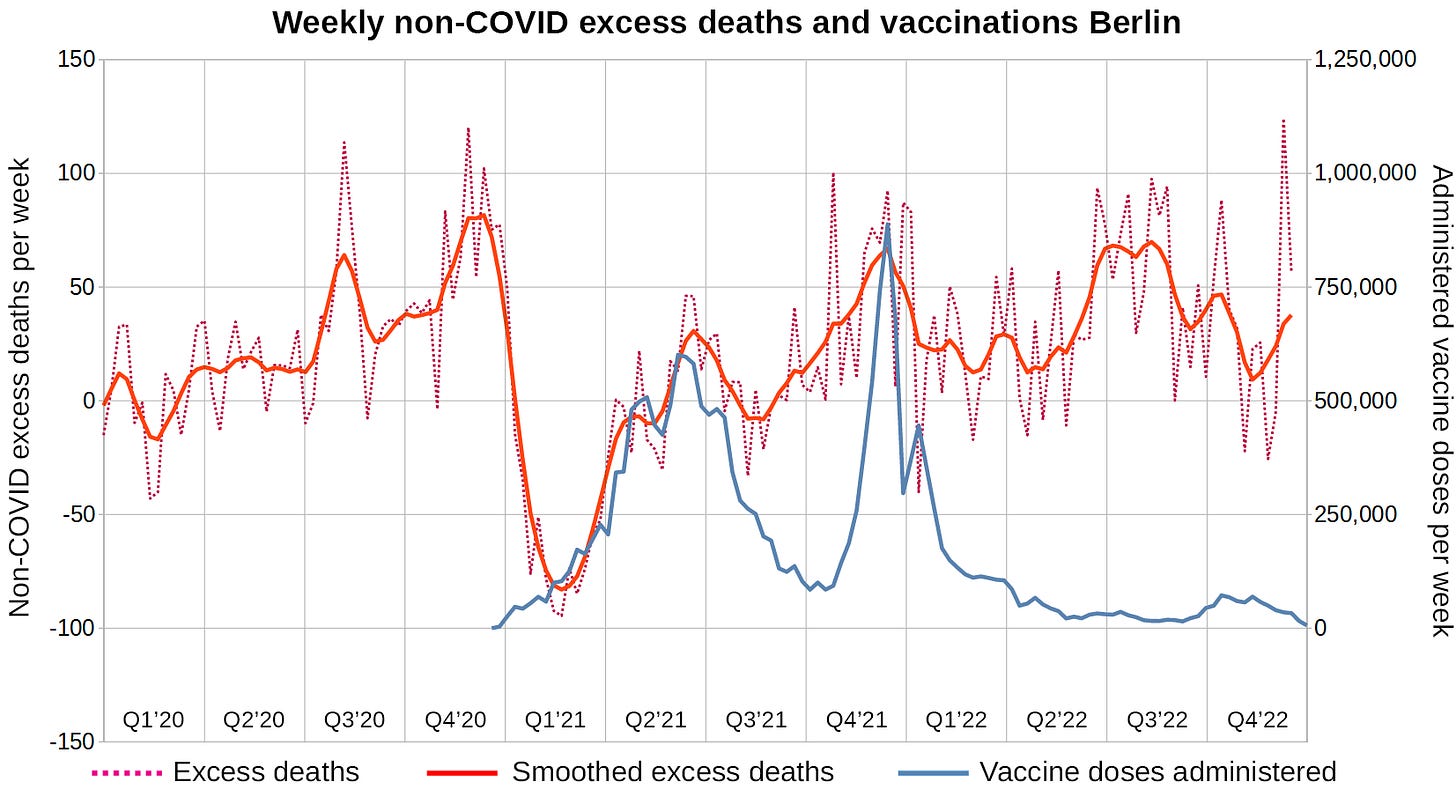
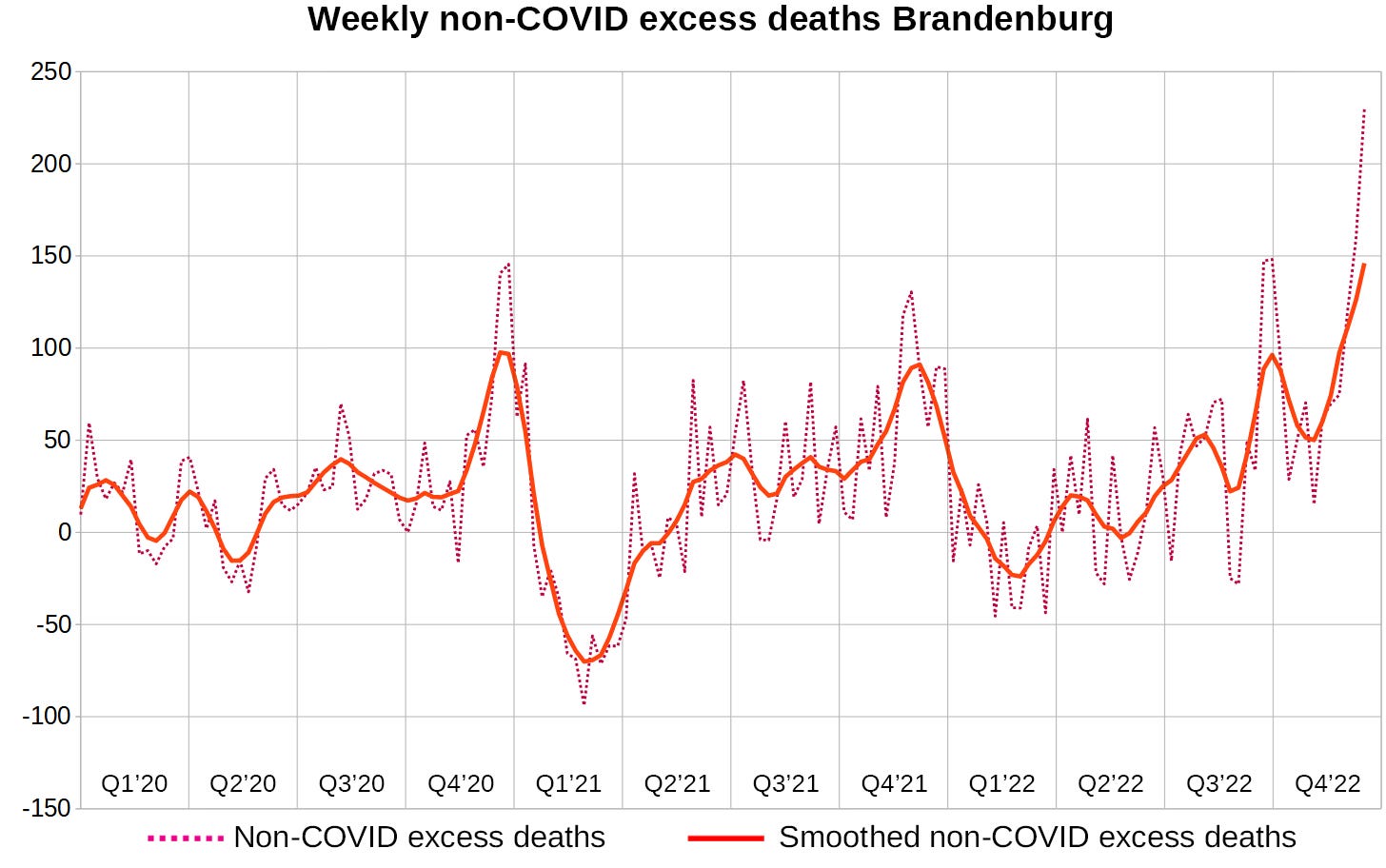


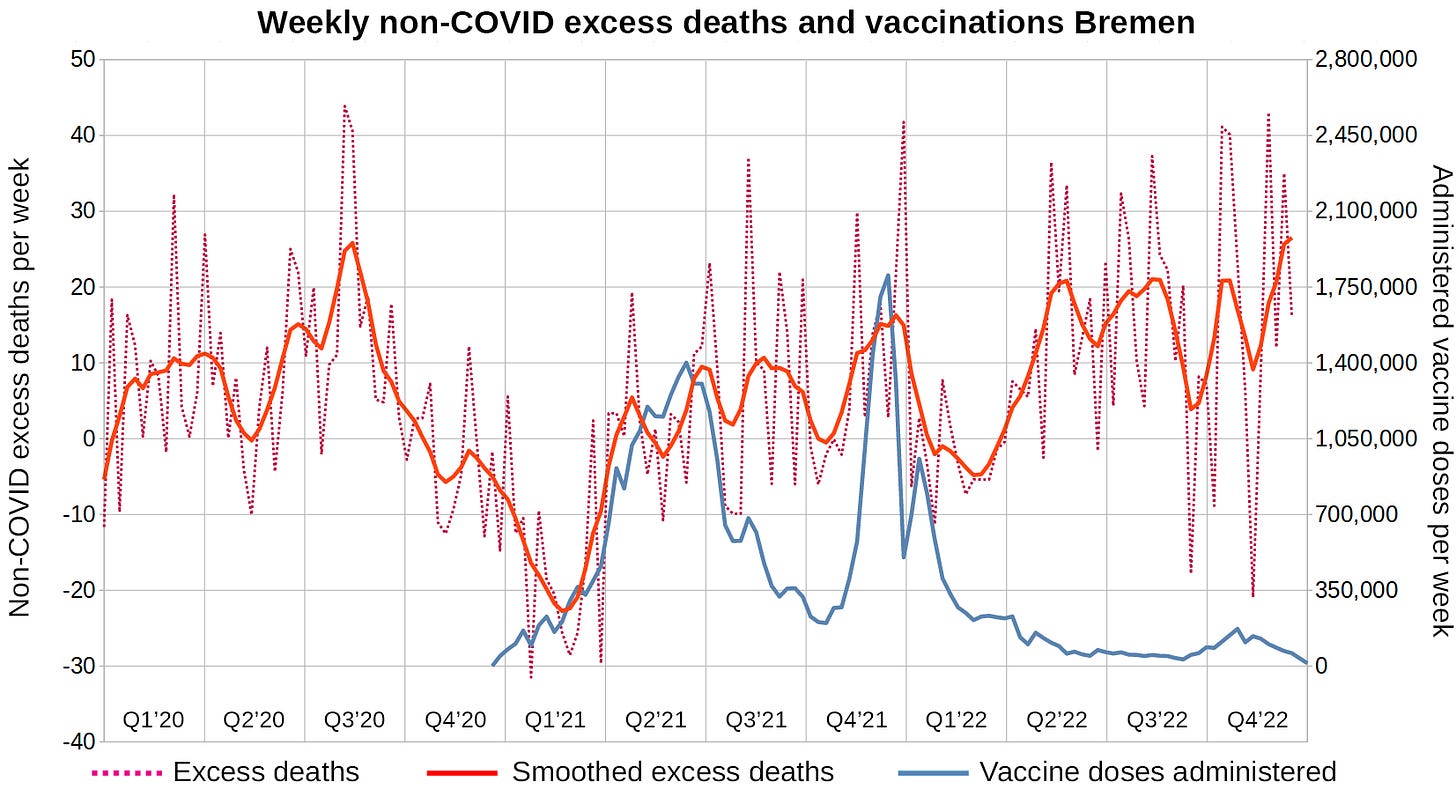



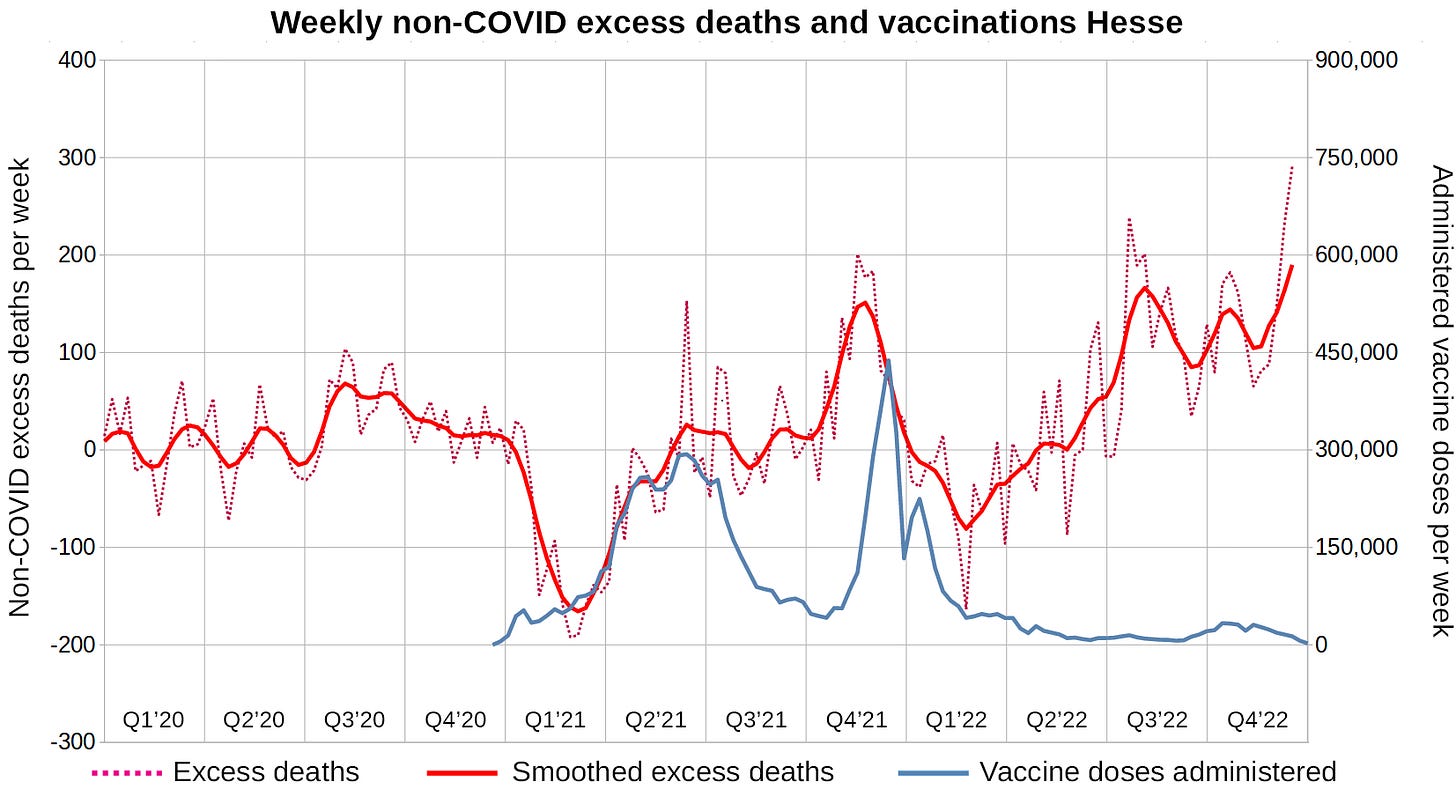
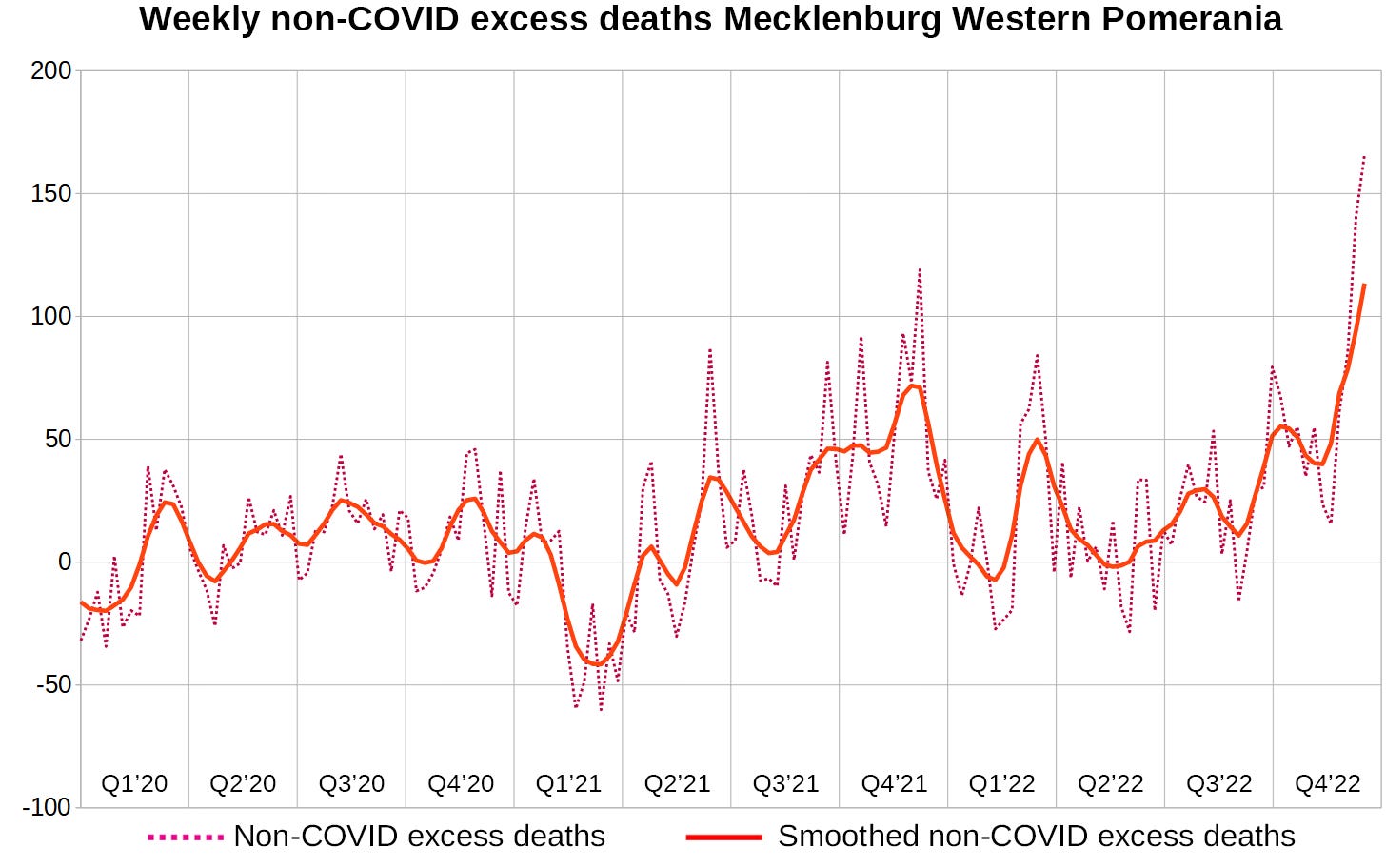







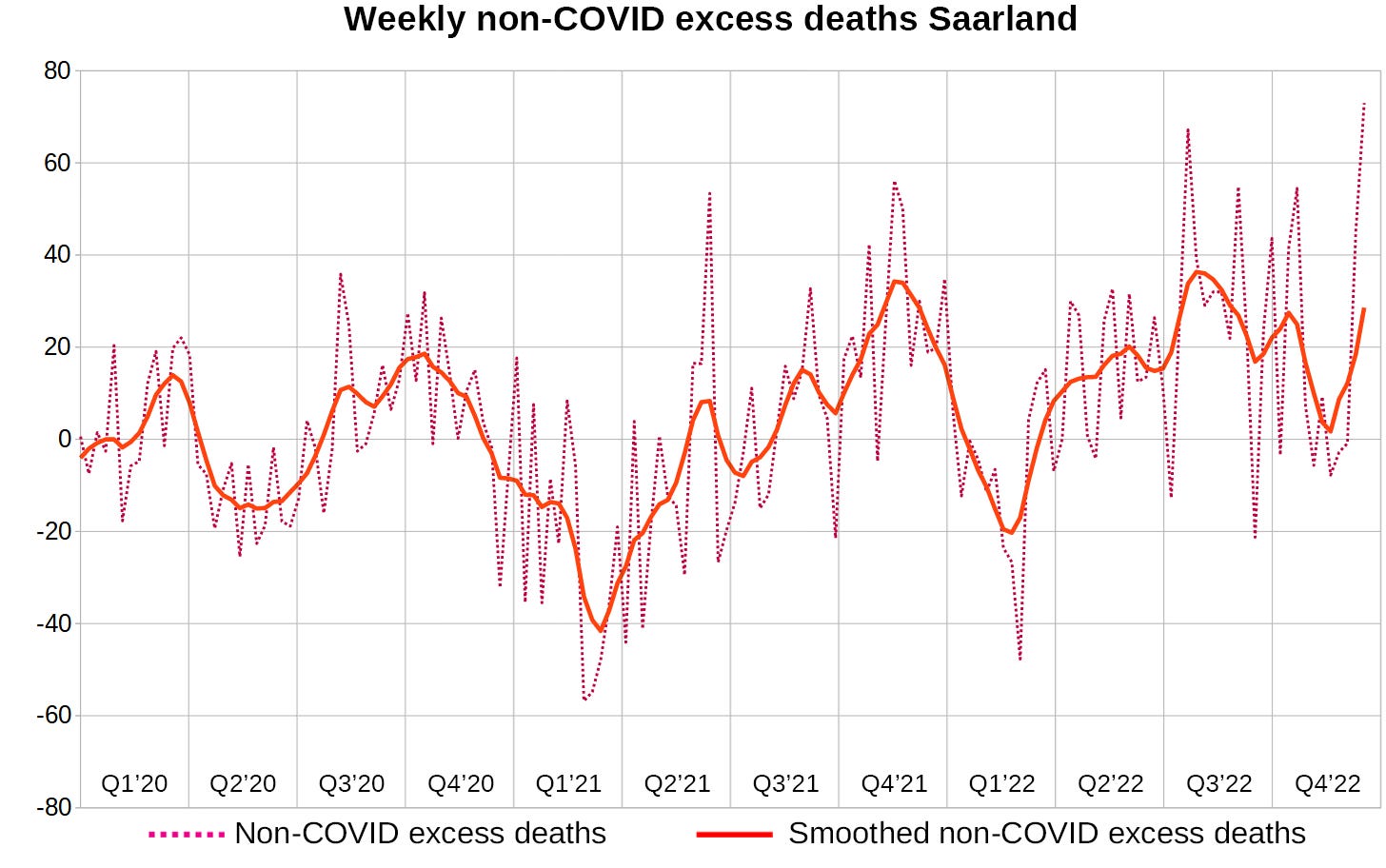










Very interesting. So the trends align extremely well for initial vaccinations, right? Q1, Q2 2021
But then, they diverge and do not seem to follow each other any more. For example in Q4 2021-Q1 2022. Or in December 2022.
Right?
Thank you, Fabian, for your sustained effort on these three articles. Let me see if my German friend with a PhD in Chemistry, will be moved to reconsider his approval of the injections which has continued even to now.
Question: who—what kinds of persons in Germany (All levels of government? What professions?)--are you directing these articles to in hopes, I guess, of persuading them to seriously investigate the safety of these injections? Have you sent your articles to any of these potential influencers? If so, any responses?
Will let you know my German friend’s response.
Stay safe and free.